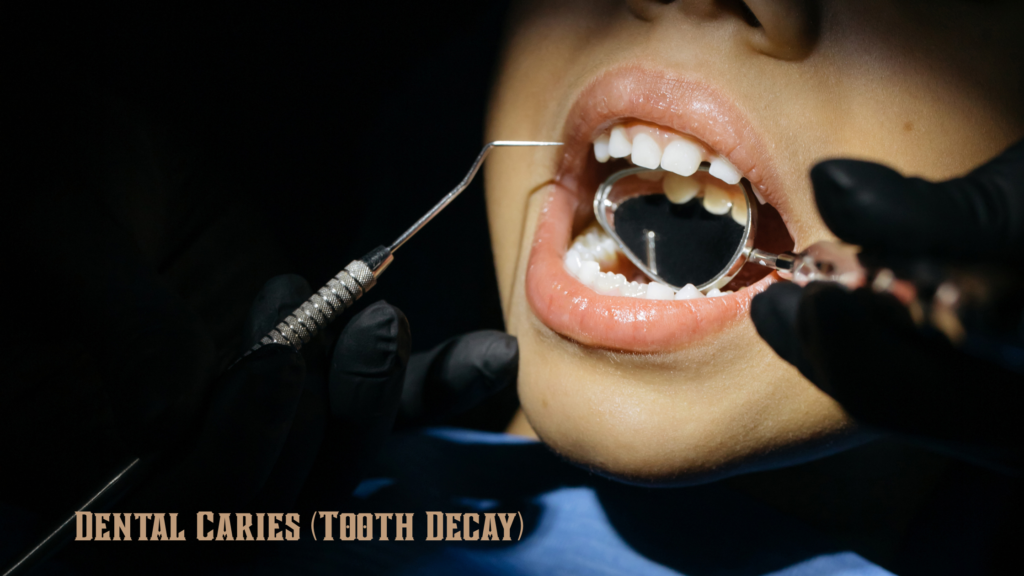Dental caries, also known as tooth decay or cavities, is a common oral health condition where the tooth structure is destroyed by acids produced by bacteria in dental plaque. It’s one of the most prevalent chronic diseases globally and can affect people of all ages.
🔍 Causes of Dental Caries
- Bacteria in the mouth (especially Streptococcus mutans)
- Frequent consumption of sugars and starches
- Poor oral hygiene
- Dry mouth or low saliva production
- Deep pits and fissures in teeth
🦷 How It Develops
- Plaque formation: Sticky film of bacteria forms on the teeth.
- Acid production: Bacteria digest sugars and produce acids.
- Demineralization: Acids break down enamel.
- Cavity formation: If not treated, decay progresses into deeper layers (dentin and pulp).
⚠️ Symptoms
- White, brown, or black spots on the teeth
- Toothache or sensitivity to hot, cold, or sweet foods
- Pain when biting or chewing
- Visible holes or pits in teeth
🛡️ Prevention
- Brush twice daily with fluoride toothpaste
- Floss daily
- Limit sugary snacks and drinks
- Regular dental checkups and cleanings
- Use dental sealants if recommended
- Drink fluoridated water
🛠️ Treatment Options
- Fluoride treatment: Early-stage remineralization
- Fillings: Remove decay and fill with composite or amalgam
- Crowns: For large areas of decay
- Root canals: If decay reaches the pulp
- Tooth extraction: If tooth is beyond repair
